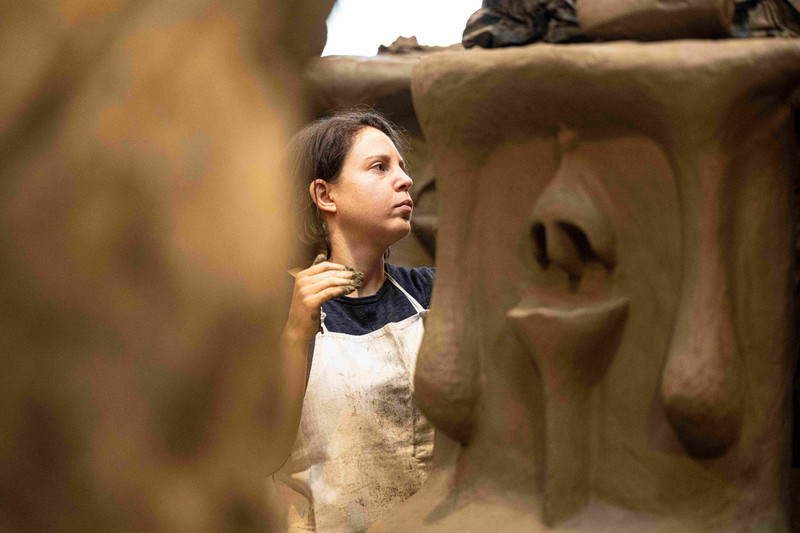Learning to grasp: Plastic Arts School for Handicraft and Art Teachers

The Plastikschule at the Goetheanum in Dornach, Switzerland, is a location steeped in tradition. Founded in 1926 on the initiative of the sculptor Oswald Dubach and the architect Carl Kemper, it was taken over by the Russian sculptor Raoul Ratnowsky in 1952. Since 1960, it has been an internationally recognised place of learning where handicraft and art teachers at Waldorf schools, special schools and curative education institutions can receive training. In 2016, several art and art therapy training courses in Dornach merged to form atka (an anthroposophic academy for therapy and art). Within this framework, the Plastikschule now also offers training in plastic/sculptural art therapy as well as postgraduate studies in Goetheanist architecture, ceramics and design.
The focus is on mixing practical and artistic work: Working with clay, wood or stone allows the participants to experience their own creativity and the healing potential of creative processes. In view of the changing needs of trainees and Waldorf institutions alike, various new full-time and part-time training formats were developed in 2020. These include a joint two-and-a-half-year fundamental education in plastic arts and a subsequent two-year specialist postgraduate course. The handicraft and art teachers receive a diploma from the Pedagogical Section at the Goetheanum, giving them access to a university degree from the Freie Hochschule Stuttgart. “There is a tremendous need for qualified subject teachers”, says SAGST project manager Andreas Rebmann. “That is why SAGST is funding, among other things, the equipment for the newly established workshop area, which was a prerequisite for the expanded course offerings.”
